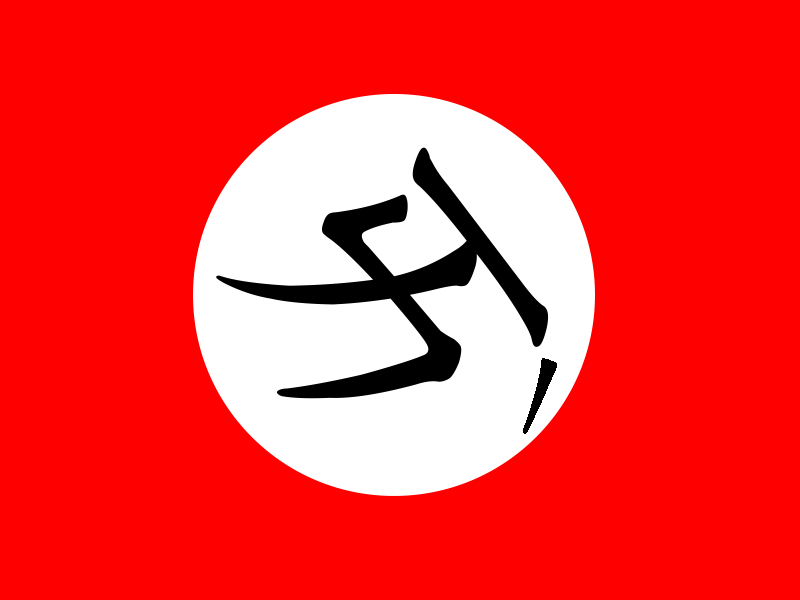該聯隊介紹網站 - http://www.lesbutler.ip3.co.uk/jg26/schlageter.htm
一次大戰後德國空軍形同解散,凡爾賽條約嚴格限制德國不得擁有重砲、潛艦、空軍、戰車等具有攻勢性質的武器裝備,僅僅准許擁有一隻十萬員額的軍隊。但是德國上下都知道這簡直是要德國完全解除武裝且放任他國對德國為所欲為,如此的嚴苛不但沒法讓德國體認戰敗的責任,更因為經濟崩潰、波蘭入侵和共黨肆虐而讓恢復軍隊規模的聲音再度響起。
德國政府於是開始秘密進行各項武器的相關研究,並且以各種名義掩護相關的組織活動,像是戰車的研究就以「農業曳引機」作為掩護,另外還成立不少「飛行滑翔研究社」之類的組織來培訓以後各種飛行人才,軍用機種更是在民用機種的掩護下繼續如火如荼的進行各種開發生產。
待納粹執政之後,國防武力急速擴張並且再也不顧國際觀感,原本秘密進行的空軍武力與民間航空現在整合於新成立的「國家航空部(RLM)」,由前空軍英雄戈林(Goering)主管節制,後來空軍又從這部門抽調出單獨成立為德國空軍(Luftwaffe),仍由戈林擔任總司令。
此時,各種空軍單位組織也紛紛成立並且進駐各地,其中以各類軍機為主的各聯隊(Jagdgeswader)大幅擴充並且加強訓練,其中的第132戰鬥機聯隊(132. Jagdgeswader)也就是後來第二十六戰鬥機聯隊(26 Jagdgeswader)的前身,進駐科隆地區為著以後的艱難任務做挑戰,以下是該聯隊榮譽頭銜的由來:
Albert Leo Schlageter was from the South of Germany, a small town
named Schoenau, 13 miles South East of Freiburg, set amidst the vast
Black Forest landscape. At the outbreak of the First World War he
enlisted in the army at age 19, and was soon to become an officer
in the Artillery.
艾柏特‧李奧‧施拉蓋特來自於一個位於黑森林中央的德國南部小鎮-修瑙,
在弗萊堡南方13公里處。在一次大戰爆發後他以19歲的年紀加入陸軍,很快的
他就成為一位砲兵軍官。
Wounded twice, he was fortunate to survive the campaign. At the
ceasing of hostilities he led his battery back to the Rhine River,
where he dismissed his men. Within a short time he joined the
Freikorps, a group of paramilitary units, and assisted in the
expulsion of the Bolsheviks from Riga in 1919. After further
actions - against the Poles, he returned to the Rhineland to
disrupt the French occupation. The French had occupied the area
as part of the Versailles treaty, and were busying themselves
draining the German economy by their administration of reparation
payments. These payments included much of the local Ruhr coal
production and other industrial output, and were largely responsible
for the high inflation which crippled the country in the early 20's.
Schlageter was captured after blowing up a section of the Duisburg
to Düsseldorf rail track. He received a sentence of death by firing
squad, and was executed on 26th May 1923. His burial plot became a
nationalist shrine and, when the French withdrew, a tall
stainless-steel cross was erected on the site, and ceremonies
were held on the anniversary of his execution each year.
He had become a local Rhineland hero.
負傷兩次,仍幸運的活到戰後。在停火後他帶領著他的砲兵連回到萊茵河,
在那裡解散了他的部屬。但不久他加入了「自由兵團」,與其他同樣背景的
退伍軍人們於1919年在里加一同對抗紅色共黨狂潮。接著在後續對抗波蘭
入侵之後,他回到萊茵河區域去對抗法國的佔領。戰後法國依照凡爾賽合約
佔領萊茵河沿岸,並且以各種行政管理和賠償費用來抽乾德國的經濟實力。
這些賠償包含了魯爾地區大部分的煤礦產出和其他工業產出,並對於讓德國
在1920年代初期處於高通貨膨脹狀態有很大的連帶責任。施拉蓋特因為涉嫌
爆破一段杜易斯堡至杜賽道夫之間的鐵路而被捕入獄,並且遭到判處槍決
死刑,行刑日期為1923年五月26日。
他的墓地後來成為國家主義的聖地,在法國撤離之後一個不鏽鋼十字架在
那墓地上立了起來,而且每年都於行刑日舉辦紀念活動猶如追悼英雄一般。
The coming years were to see the restoration of the Rhineland back
under German control and military occupation. In 1938 the Geschwader,
then JG 132, were based at Cologne and Düsseldorf airports. The local
people felt a great pride in them and adopted them as their own with
Invitations to civil ceremonies and parades became frequent
occurrences. The Geschwader responded by holding air shows, which
were very popular with the local people who attended in large numbers.
With pride and honor restored, it was suggested that the Geschwader
take the name of a local hero. The name "Schlageter" was accepted by
the Luftwaffe High Command, and the honor title, Jagdgeschwader 132
"Schlageter", awarded at a ceremony on 11th December 1938. A suitable
emblem was adopted, a gothic S in a shield, and was displayed on all
the units aircraft from 1939-1941.
幾年之後萊茵河地區又回歸德國管轄且恢復軍隊駐紮,而1938年德國空軍
132聯隊進駐科隆及杜賽道夫機場,當地居民感到十分榮耀並將他們視為己出
,常常邀請他們前來民間典禮儀式和各種遊行活動。而該132聯隊也回報以
最拿手且最受歡迎的空中飛行秀,讓當地大批居民得以欣賞這難得的演出。
民眾於榮耀感之下,提議該聯隊能否以當地英雄命名,這建議隨即獲得
德國空軍高層認可而將「施拉蓋特」這英雄名稱賦予132聯隊,於1938年
十一月11日冠名儀式中正式將部隊名稱改為「施拉蓋特132單發戰鬥機聯隊」。
該聯隊專屬徽章則是採用歌德體「S」於盾牌內,並廣泛用於1938至1941年間
各所轄單位和飛機上。
之後該聯隊改為第二十六戰鬥機聯隊,參與西線戰役,更因為在1941至1942給予盟軍空中武力不少重大打擊而被盟軍私下稱做「阿布維爾好漢」。接著盟軍武力不斷增強,空中轟炸和戰鬥機攔截更加慘烈,直到戰敗,該部隊仍在作戰,只是隨著而去的有兩千多次的擊墜紀錄和數百人傷亡的回憶....
其他相關紀錄還請見上面的網站或者參閱該往戰作者同名書籍「第二十六戰鬥機聯隊」,由麥田出版。


 字體:小 中 大
字體:小 中 大










